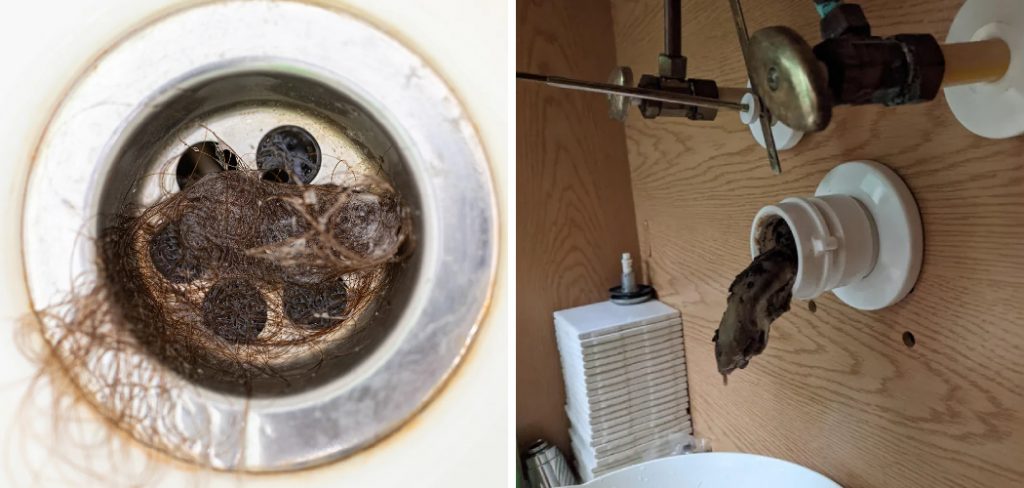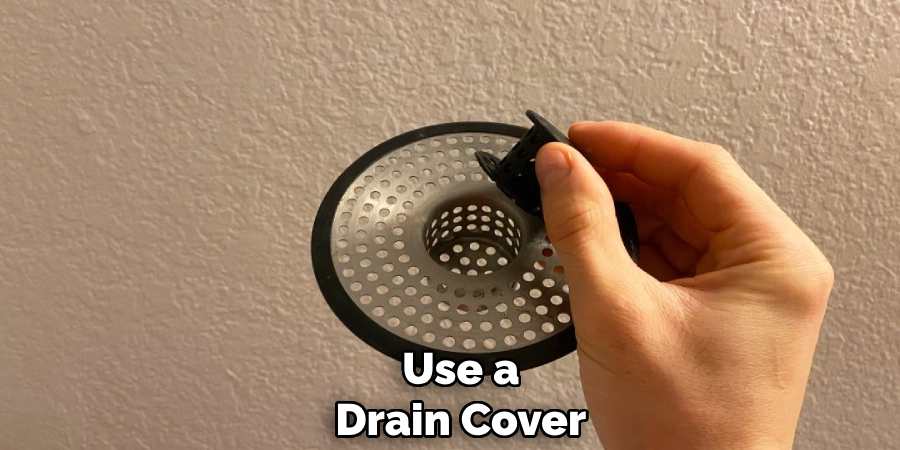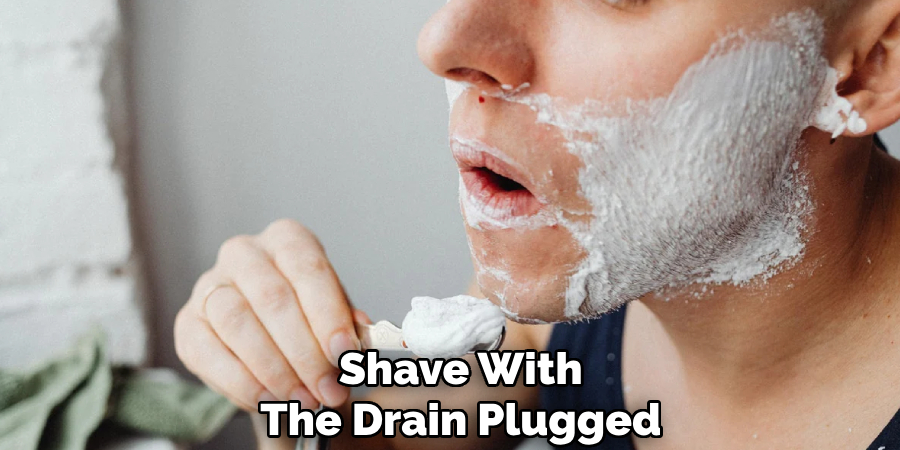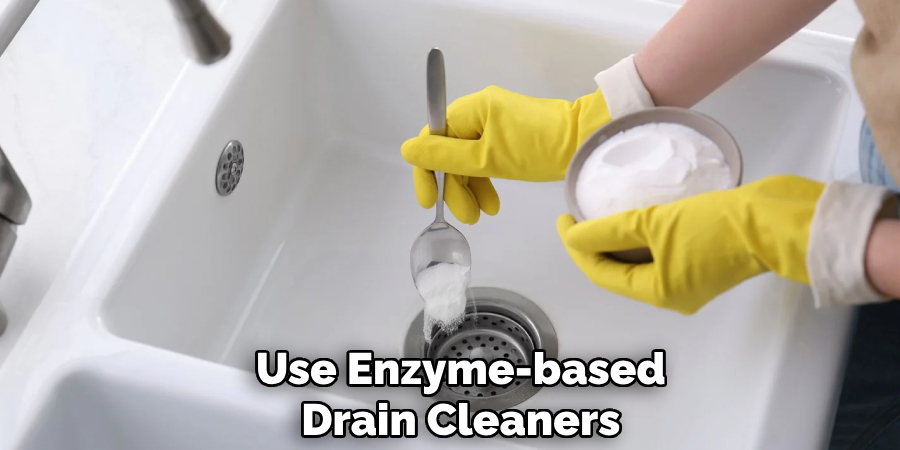Shaving in the shower is a convenient way to save time and keep your skin hydrated, but it often comes with an annoying downside—clogged drains. Hair and shaving cream can quickly accumulate, leading to blockages that are both unpleasant and costly to fix.

The good news is that with a few simple tips and practices, you can keep your shower drain free from clogs while still enjoying the benefits of shaving in the shower. In this blog post, we’ll walk you through the steps on how to shave without clogging shower drain so that you can get back to using it in no time! So grab your tools, and let’s get started!
Why Shaving in the Shower Can Clog Drains
Shaving in the shower may be convenient, but it often leads to clogged drains if proper precautions aren’t taken. The main culprit is the combination of hair and shaving cream or gel. When washed down the drain, hair strands can stick to the walls of the pipes, and the creamy residue from shaving products acts as a binding agent, causing the buildup to worsen over time. Additionally, warm water softens any soap scum in the pipes, which can mix with hair and create a stubborn, sticky blockage. Over time, this accumulation restricts water flow, leading to slow-draining or fully clogged showers. Understanding the factors that contribute to clogs allows you to take proactive measures to maintain your drain’s functionality.
Tools and Materials Needed
To effectively address and prevent shower drain clogs, you will need a few essential tools and materials. These include:
- Plunger: Useful for dislodging minor blockages using suction and pressure.
- Drain snake or auger: Ideal for reaching deeper clogs caused by hair or other debris.
- Drain cleaning brush: Helps to scrape and remove build-up along the edges of the drain.
- Boiling water: Useful for dissolving soap scum and loosening grime.
- Vinegar and baking soda: A natural and eco-friendly solution for breaking down residue.
- Rubber gloves: Protect your hands while dealing with clogs or cleaning products.
- Bucket: Handy for catching excess water or debris during the cleaning process.
Having these tools and materials on hand ensures you are prepared to tackle clogs and maintain a clear and functional drain system.
10 Methods How to Shave without Clogging Shower Drain
1. Use a Drain Cover or Hair Catcher
One of the most straightforward and effective methods to prevent hair from clogging your shower drain while shaving is to install a drain cover or hair catcher. These devices fit snugly over your drain and trap loose hair clippings before they enter the plumbing.

Drain covers come in various materials such as silicone, plastic, or metal, and are designed with small holes or mesh that allow water to flow freely while catching hair. Using a hair catcher not only keeps the drain clear but also makes cleanup simple—just remove and empty the trapped hair regularly. This inexpensive accessory can drastically reduce the risk of clogged drains and is a must-have for anyone shaving in the shower.
2. Shave Over a Disposable Towel or Cloth
A practical and low-tech approach to keeping hair out of the drain is to shave over a disposable towel or cloth placed in the shower floor. Lay a thin towel, microfiber cloth, or even a disposable shaving mat on the shower floor to catch hair clippings as you shave.
This way, instead of falling into the drain, hair collects on the cloth, which you can then shake off into the trash. This method requires a bit more effort in cleanup but prevents hair buildup inside the drain pipes. Using disposable or easily washable cloths ensures hygiene and convenience while protecting your plumbing from blockages.
3. Brush Away Loose Hair Before Shaving
Before starting your shave, spend a minute brushing or rinsing off any loose hair from your body parts or shaving area. This preemptive step helps remove hair that might otherwise fall into the drain during shaving. For example, if shaving your legs, a quick rinse or brush can reduce loose hairs.
Similarly, if shaving facial hair in the shower, wiping off loose strands beforehand can prevent excessive hair falling directly into the drain. This method reduces the amount of free hair in the shower, lessening the chance of clogs and making your shaving process cleaner overall.
4. Shave with the Drain Plugged
If your shower drain has a functional plug or stopper, use it while shaving to block the drain temporarily. This allows you to collect the hair clippings in the water instead of letting them flow down the drain. Once you finish shaving, carefully remove the stopper and use a cup or small container to scoop out the water along with the hair clippings. Dispose of the hair in the trash rather than washing it down the drain. This technique requires a bit of extra attention but effectively prevents clogs by keeping hair out of the pipes entirely.

5. Shave Outside the Shower When Possible
If minimizing the risk of clogged shower drains is a priority, consider shaving outside the shower when possible. Using a dedicated shaving station, such as a bathroom sink or vanity area with a drain that is easier to clean, reduces hair accumulation in the shower pipes. Shaving outside the shower also allows for better hair control and cleanup.
After shaving, hair can be swept or wiped away more easily from a countertop or sink, whereas shower floors often trap stray hairs. While shaving in the shower is convenient, opting for an alternate location can protect your shower plumbing in the long term.
6. Regularly Clean Your Shower Drain
Prevention is key to avoiding stubborn clogs. Even if you take precautions while shaving, hair and soap residue will inevitably accumulate over time. Regularly cleaning your shower drain helps maintain clear pipes and prevents blockages. Remove the drain cover and use a small drain snake, tweezers, or a bent wire hanger to fish out any trapped hair.
Additionally, flush the drain weekly with a mixture of baking soda and vinegar, followed by hot water, to dissolve soap scum and break down organic debris. Routine drain maintenance significantly reduces clogging risks and keeps your shower flowing smoothly.
7. Use a Razor Designed to Minimize Hair Shedding
Selecting the right razor can influence how much hair falls into your shower drain during shaving. Razors with multiple blades, precision trimming edges, or those designed to trap cut hairs can minimize loose hair shedding. Some modern razors even have built-in hair catchers that reduce the amount of hair that falls away from the blade. Investing in a quality razor can reduce stray hair clippings that would otherwise clog the drain, making shaving cleaner and more efficient.

8. Shave with Minimal Water Flow
When shaving in the shower, controlling water flow can help keep hair from washing down the drain immediately. Turn down the water pressure or use a handheld showerhead to direct water away from the drain area during shaving. This gives you time to collect or rinse hair off with a towel or catch it with a drain cover. Additionally, minimal water flow reduces the chance that loose hair will swirl down the drain. This method requires conscious effort but can significantly reduce the volume of hair entering your plumbing.
9. Dispose of Hair in Trash, Not the Drain
One of the most important habits for preventing clogged shower drains is proper disposal of hair clippings. After shaving, avoid rinsing hair directly into the drain or shower floor. Instead, collect hair using a paper towel, disposable cloth, or even your hands, and throw it into the trash bin.
This may feel like extra work, but it prevents hair from accumulating inside the pipes, where it combines with soap and grease to form tough clogs. Consistent removal of hair from the shower area is a simple yet highly effective way to maintain clean drains.
10. Use Enzyme-Based Drain Cleaners for Maintenance
As an ongoing preventive measure, use enzyme-based drain cleaners regularly to break down organic materials that can build up in your shower drain, including hair, soap scum, and body oils.
Unlike harsh chemical drain cleaners, enzyme cleaners work by using natural bacteria and enzymes to digest buildup slowly without damaging your pipes or harming the environment. Pour the recommended amount into the drain weekly or biweekly and let it sit overnight. This gentle cleaning method helps keep drains clear, reduces odors, and complements other hair management practices to ensure long-term drainage health.

Conclusion
Shaving in the shower drain ideas can be a seamless part of your daily routine without the frustrating consequence of clogged drains, provided you adopt the right strategies. From installing a simple drain cover to regularly cleaning the drain, each of these ten methods offers practical ways to reduce hair buildup and maintain free-flowing pipes.
Preventing clogs starts with catching loose hair before it enters the drain, whether by shaving over a towel, plugging the drain, or brushing off stray hairs. Choosing the right razor, minimizing water flow, and proper hair disposal further enhance these efforts. Thanks for reading, and we hope this has given you some inspiration on how to shave without clogging shower drain!
About the Author
Adrian Green is a passionate woodworking enthusiast who has dedicated his life to the craft of woodworking. From his early days working alongside his father in the family woodworking shop, Adrian has honed his skills and developed a deep love for creating beautiful, functional pieces with his hands. As the voice behind The Woodenify Blog, he shares his knowledge, tips, and inspiration with fellow woodworkers of all skill levels, helping them build confidence in their abilities while learning new techniques.
Professional Focus
- Specializes in DIY woodworking projects, from furniture making to home décor.
- Provides step-by-step guides, tips, and practical tutorials for woodworkers at any skill level.
- Focused on empowering readers with confidence and knowledge through easy-to-follow instructions and hands-on techniques.
- Passionate about building a community where makers can share, learn, and grow together in the world of woodworking.
Education History
University of Craft and Design – Bachelor of Fine Arts (BFA) in Woodworking and Furniture Design
Woodworking Apprenticeships – Gained extensive hands-on experience through various workshops and mentorships with seasoned craftsmen, refining carpentry and furniture-making skills.
Expertise
- DIY woodworking, carpentry, furniture making, and home décor projects.
- Creating clear, accessible tutorials and guides for beginner to advanced woodworkers.
- Helping readers experience the satisfaction and fulfillment of turning raw materials into stunning finished products.
